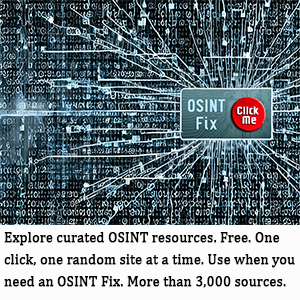Think It. The * It * Becomes Real. Think Again?
August 27, 2025
 No AI. Just a dinobaby working the old-fashioned way.
No AI. Just a dinobaby working the old-fashioned way.
Fortune Magazine — once the gem for a now spinning-in-his-grave publisher —- posted “MIT Report: 95% of Generative AI Pilots at Companies Are Failing.” I take a skeptical view of MIT. Why? The esteemed university found Jeffrey Epstein a swell person.
The thrust of the story is that people stick smart software into an organization, allow it time to steep, cook up a use case, and find the result unpalatable. Research is useful. When it evokes a “Duh!”, I don’t get too excited.
But there was a phrase in the write up which caught my attention: Learning gap. AI or smart software is a “belief.” The idea of the next big thing creates an opportunity to move money. Flow, churn, motion — These are positive values in some business circles.
AI fits the bill. The technology demonstrates interesting capabilities. Use cases exist. Companies like Microsoft have put money into the idea. Moving money is proof that “something” is happening. And today that something is smart software. AI is the “it” for the next big thing.
Learning gap, however, is the issue. The hurdle is not Sam Altman’s fears about the end of humanity or his casual observation that trillions of dollars are needed to make AI progress. We have a learning gap.
But the driving vision for Internet era innovation is do something big, change the world, reinvent society. I think this idea goes back to the sales-oriented philosophy of visualizing a goal and aligning one’s actions to achieve that goal. I a fellow or persona named Napoleon Hill pulled together some ideas and crafted “Think and Grow Rich.” Today one just promotes the “next big thing,” gets some cash moving, and an innovation like smart software will revolutionize, remake, or redo the world.
The “it” seems to be stuck in the learning gap. Here’s the proof, and I quote:
But for 95% of companies in the dataset, generative AI implementation is falling short. The core issue? Not the quality of the AI models, but the “learning gap” for both tools and organizations. While executives often blame regulation or model performance, MIT’s research points to flawed enterprise integration. Generic tools like ChatGPT excel for individuals because of their flexibility, but they stall in enterprise use since they don’t learn from or adapt to workflows, Challapally explained. The data also reveals a misalignment in resource allocation. More than half of generative AI budgets are devoted to sales and marketing tools, yet MIT found the biggest ROI in back-office automation—eliminating business process outsourcing, cutting external agency costs, and streamlining operations.
Consider this question: What if smart software mostly works but makes humans uncomfortable in ways difficult for the user to articulate? What if humans lack the mental equipment to conceptualize what a smart system does? What if the smart software cannot answer certain user questions?
I find information about costs, failed use cases, hallucinations, and benefits plentiful. I don’t see much information about the “learning gap.” What causes a learning gap? Spell check makes sense. A click that produces a complete report on a complex topic is different. But in what way? What is the impact on the user?
I think the “learning gap” is a key phrase. I think there is money to be made in addressing it. I am not confident that visualizing a better AI is going to solve the problem which is similar to a bonfire of cash. The learning gap might be tough to fill with burning dollar bills.
Stephen E Arnold, August 27, 2025


